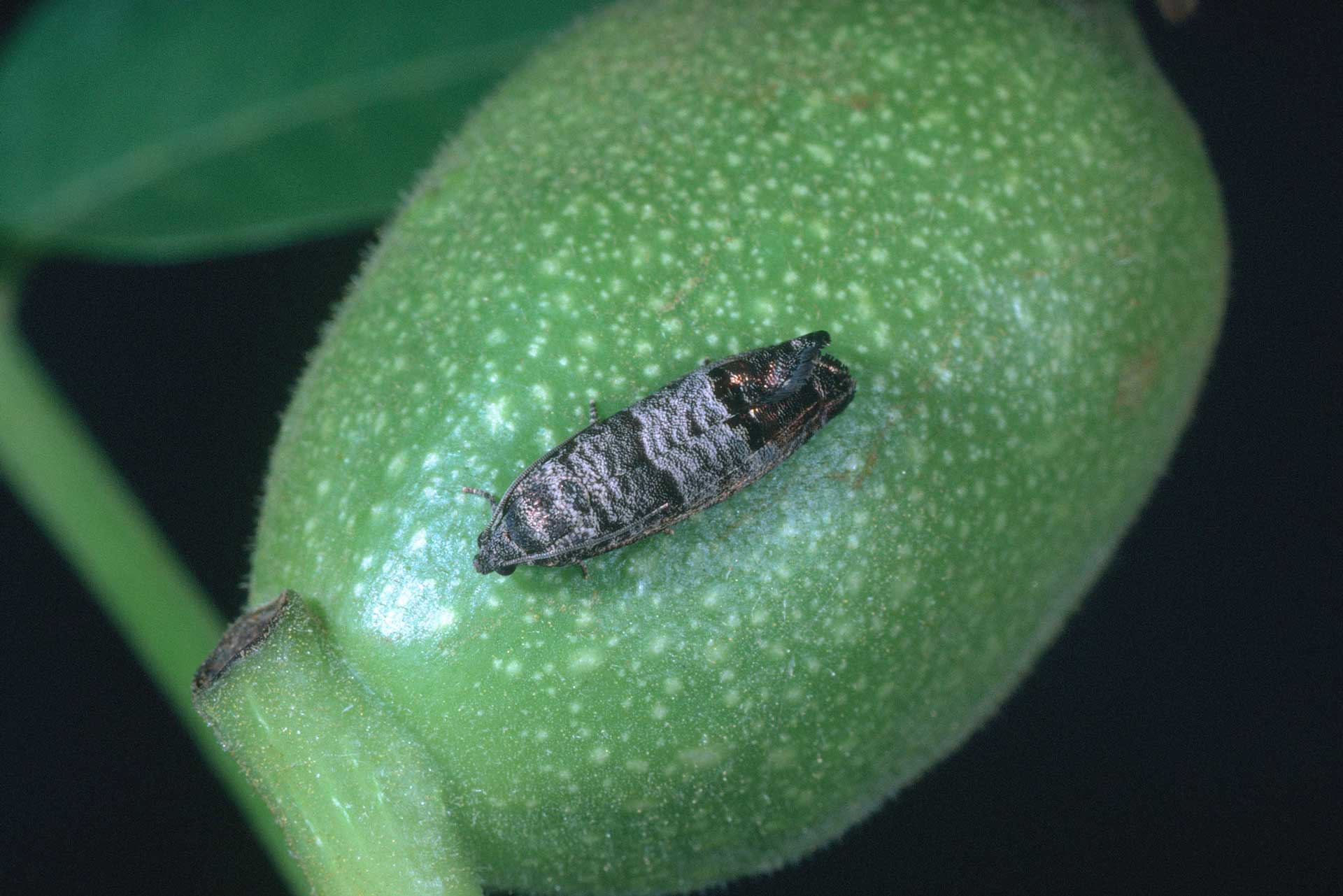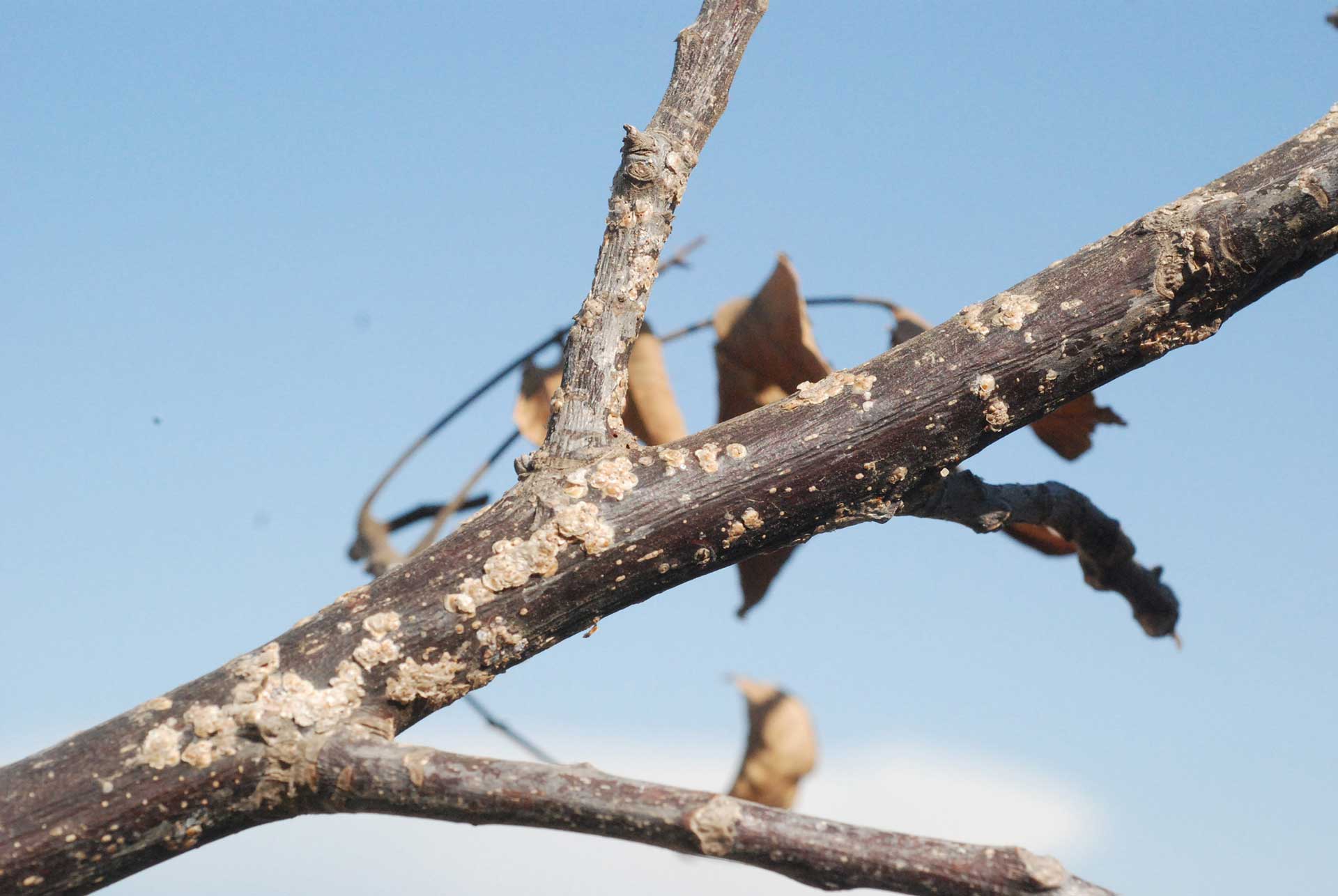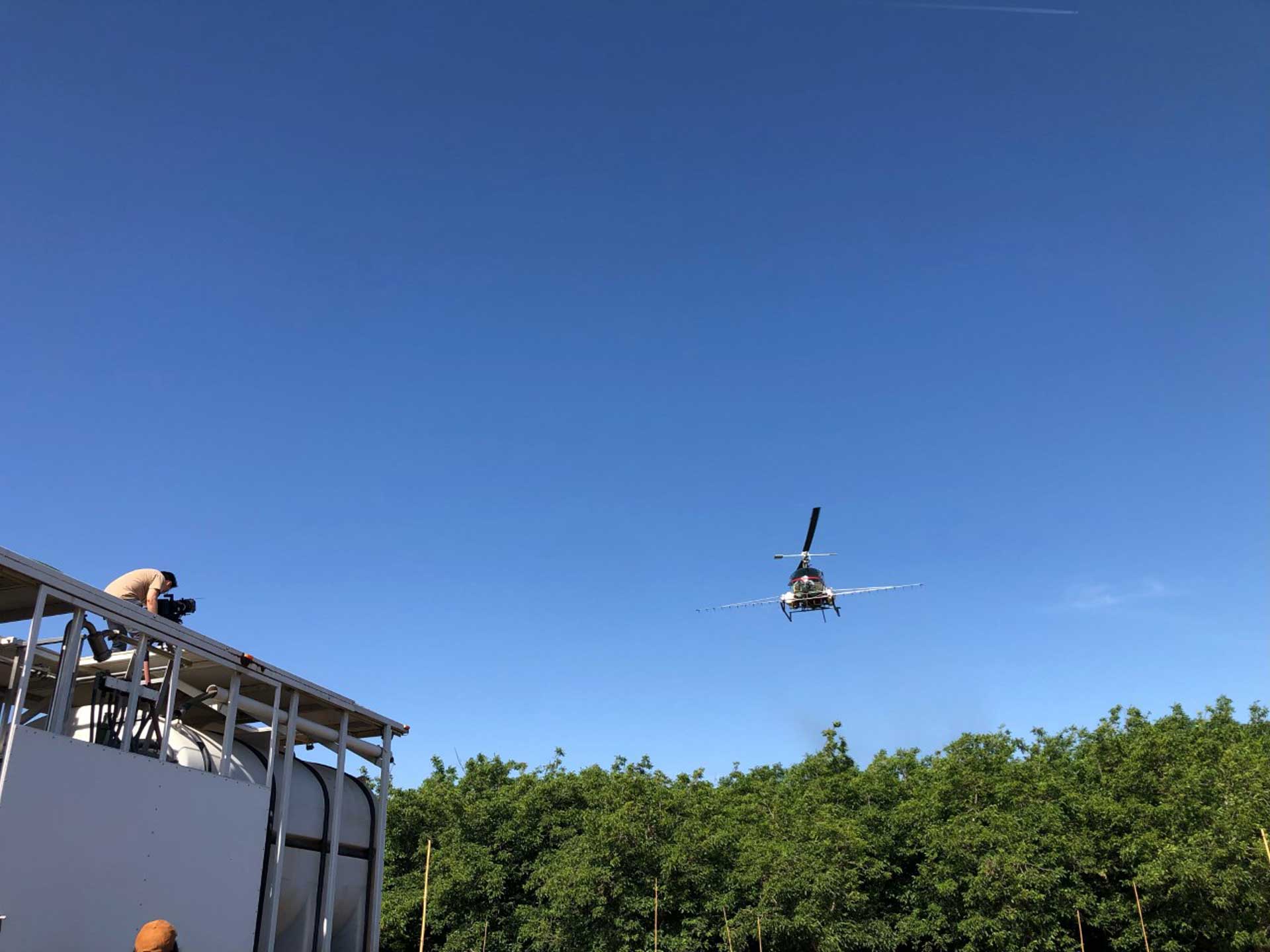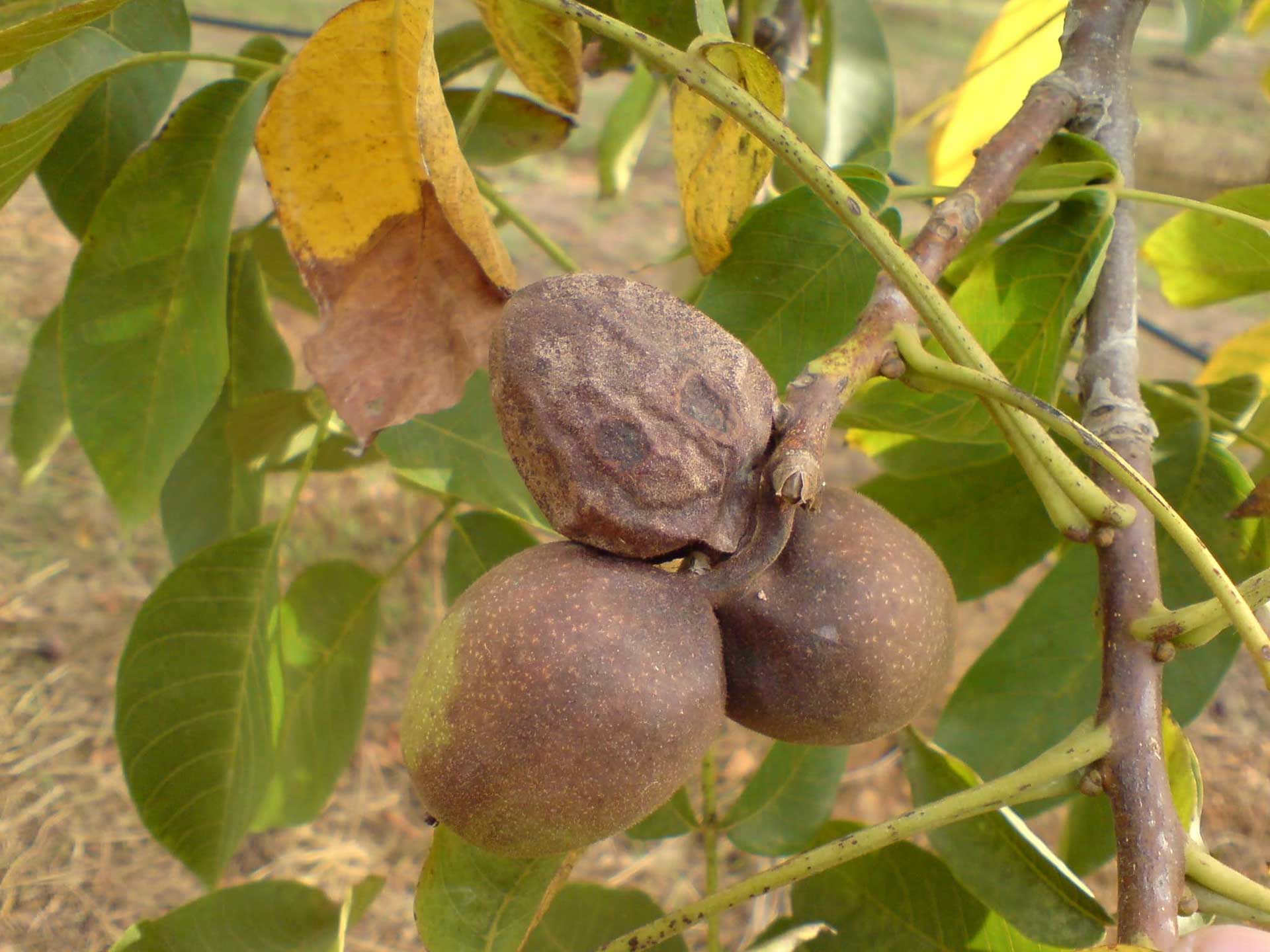
New Year’s Eve was a couple months ago, but, as spring approaches, a new year is just beginning in walnut orchards.
Depending on the walnut variety and growing area, buds will soon start pushing and roots will begin searching for nutrients and possibly water. With warmer weather, pests and disease will also start new life cycles. These natural occurrences are reminders that certain tasks need to be done in orchards in a timely manner to ensure tree health and productivity.
Orchard sanitation, including blowing off berms and shredding orchard debris, starts the year off with a clean orchard. Preemergent herbicide applications can present a head start on weed control.
As spring approaches, Tulare County walnut grower Robert Smith noted five significant areas where performance can make a difference.
1. Monitor for Blight
According to the UCCE publication Sacramento Valley Orchard Source, walnut blight caused by the bacterium Xanthomonas arboricola pv. juglandis (Xaj) can cause crop loss. Weather, pathogen levels in the orchard and walnut variety are factors in this disease. This disease overwinters inside dormant bud scales and causes initial infection in the spring when rain splashes the bacteria on developing shoots and walnut flowers.
The most susceptible varieties, Smith said, are the early leafing varieties. Blight damage in later leafing varieties depends more on the level of inoculum on bud scales.
Bud population sampling is used to measure if walnut blight bacteria populations are building or if spray applications the previous year were keeping population levels low.
UCCE guidelines report that buds can be sampled until the time they begin to open. This can be done in March or early April. Dormant walnut spurs with large terminal buds should be selected for sampling. A sample size of 100 three-inch-long spurs with buds is recommended. One or two spurs per tree will give a good representative sample. Spurs can be collected from the lower half of the canopy as the bacteria moves down through the tree canopy.
The spurs should be stored inside a paper bag in a cool, dry place until sent to the lab. A UCCE advisor can recommend a testing laboratory.

2. Have CM Traps Up and Running
Recommendation from the UC Walnut Pest Management Guidelines is to place traps in the orchard in early March to determine first codling moth emergence.
Codling moths overwinter as full-grown larvae under tree bark or orchard trash. Smith said codling moth adults emerge when early walnut varieties begin to leaf out, so having traps out early will help determine control timing. Depending on navel orangeworm pressure from the previous season, pheromone traps can help determine codling moth pressure in the orchard this spring.
The first flight of codling moth typically starts sometime from early March to early April and is from the overwintered generation. Traps with standard 1 mg pheromone (1X) lures should be placed in the southeast quadrant of the tree about six to seven feet from the ground. Traps placed higher in the tree canopy catch more moths, which may be useful in orchards with low codling moth numbers.
Traps with CM-DA lures should be hung mid-canopy and are most useful in orchards that are either using mating disruption or near other orchards using mating disruption.
The UC guidelines explain that biofix is the first date that moths are consistently found in traps and sunset temperatures have reached 62 degrees F. All moths caught in traps with standard 1 mg pheromone lures will be males. Traps with CM-DA combo lures, which contain codlemone pheromone (the male attractant used in 1 mg lures) and a kairomone made of pear volatiles, attract only males before females emerge and both males and females after that.

3. Monitor for Scale
Walnut scale is an armored scale that has become relatively common in walnut orchards depending on the growing region. In high populations, it is found in crusted layers on older branches and scaffolds.
Because treatment timing is important for good scale control, monitoring during delayed dormancy is important.
During the growing season, the scale cover, which helps to protect against predators, also conveniently protects the scale from many pesticides. Scales are very susceptible to pesticide application during the crawler stage when they are exposed.
Sacramento Valley Orchard Source reports that monitoring for scale in walnuts can be done by wrapping a piece of double-sided sticky tape around a branch where scale is present. The sticky tape will help to determine if crawlers are present. The tape should be replaced each week.

4. Watch for Signs of Botryosphaeria Infection
This fungal disease can build up in an orchard over time. Watching for signs of infection and pruning out infected wood can reduce the amount of inoculum in the orchard.
“You can think there is not much out there, but all of a sudden there is a lot of infection,” Smith said.
Research conducted at the Kearney Agricultural Research and Extension Center discovered that ten fungal pathogens in the family of Botryosphaeriaceae and two Phomopsis species can cause blight of walnut fruit and invade and kill spurs with the buds. The killing of the buds, which contain the next year’s crop, can partially explain recently noticed yield reductions.
To control the Bot disease, the Walnut Commission advises removal of dead branches and shoots to reduce the amount spore inoculum in the orchard.

5. Make Foliar Nutrient Applications
Research trials done by UCCE Farm Advisor Emeritus Joe Grant showed that foliar sprays in walnuts were best applied in late spring flush.
CCA Rich Kreps said that orthophosphorus and zinc are big for producing nuts. Many growers are also using cobalt as a means to reduce ethylene. Boron is an important micronutrient for pollen tube elongations.
Both mature and young walnut trees absorb the micronutrient zinc at the same rate. Late spring flush has increased surface area and results in better absorption.
This research also showed that the combination of zinc and nitrate resulted in phytotoxicity in walnuts, and this combination is not recommended.

Cecilia Parsons
Cecilia Parsons has spent the past 30 years covering agriculture in California for a variety of newspapers, magazines and organizations. During that time she has been fortunate to witness some of the important events that have shaped this diverse industry and worked hard to examine and explain these events for readers.
When Cecilia first moved to the San Joaquin Valley in 1976, her first journalism job was at a small daily newspaper where she covered “farm news.” From there she branched out to writing for a dairy magazine and a regional weekly agriculture publication.
Cecilia is part of a farming family from the rural community of Ducor where she also raises purebred sheep and is attempting to master versatility ranch horse riding.










